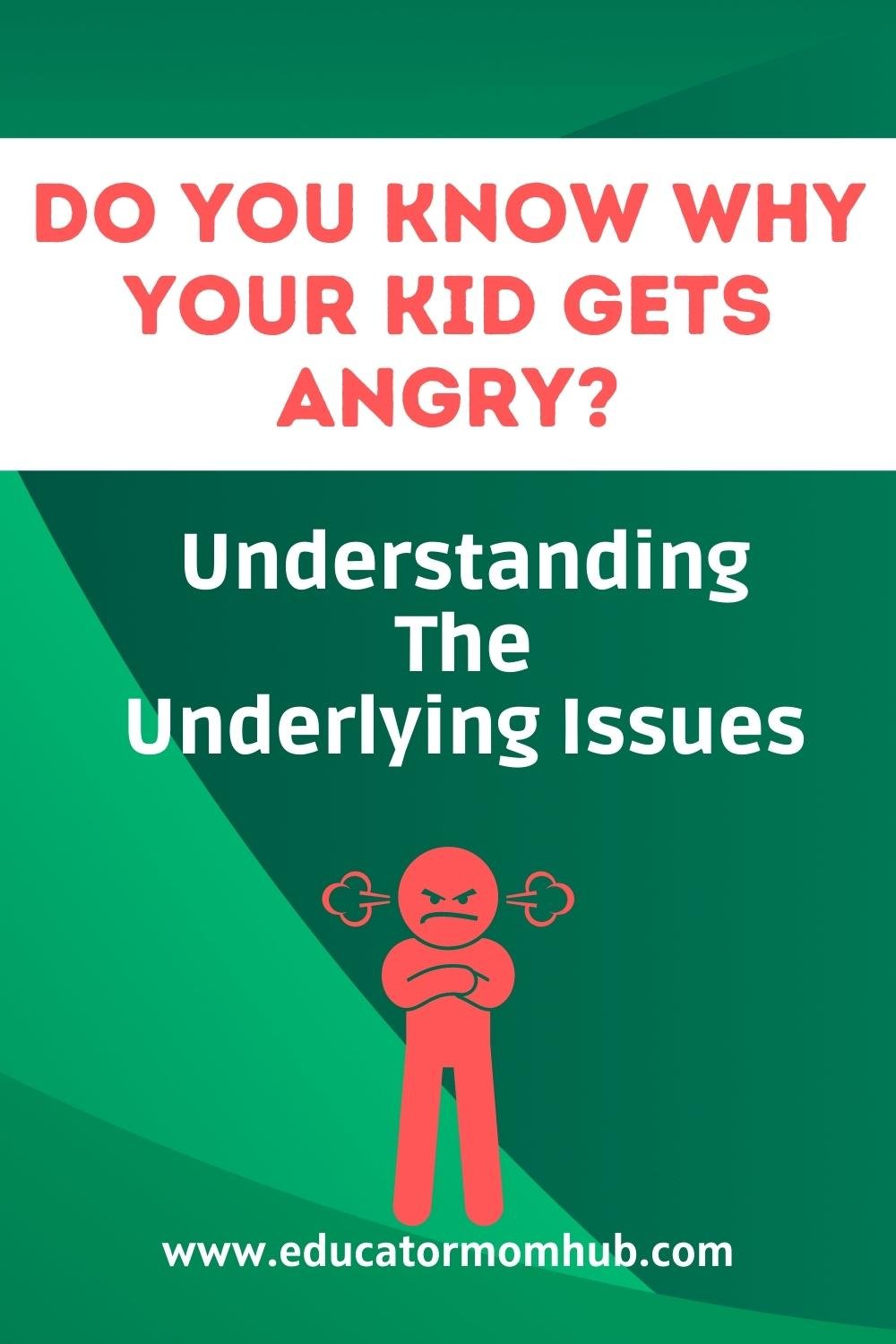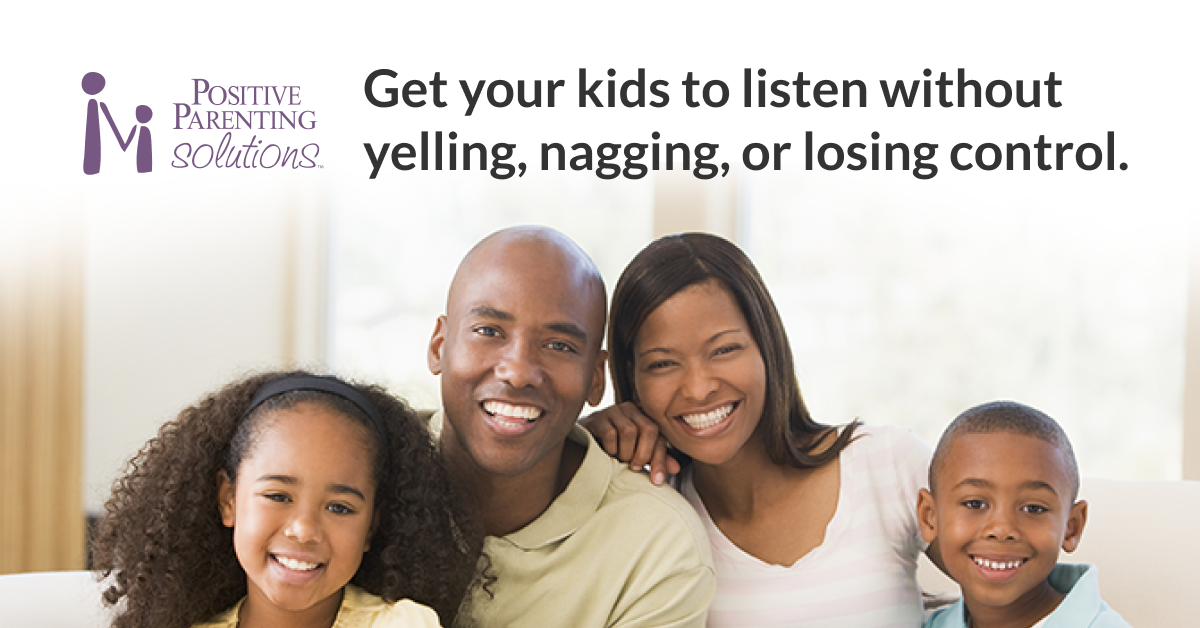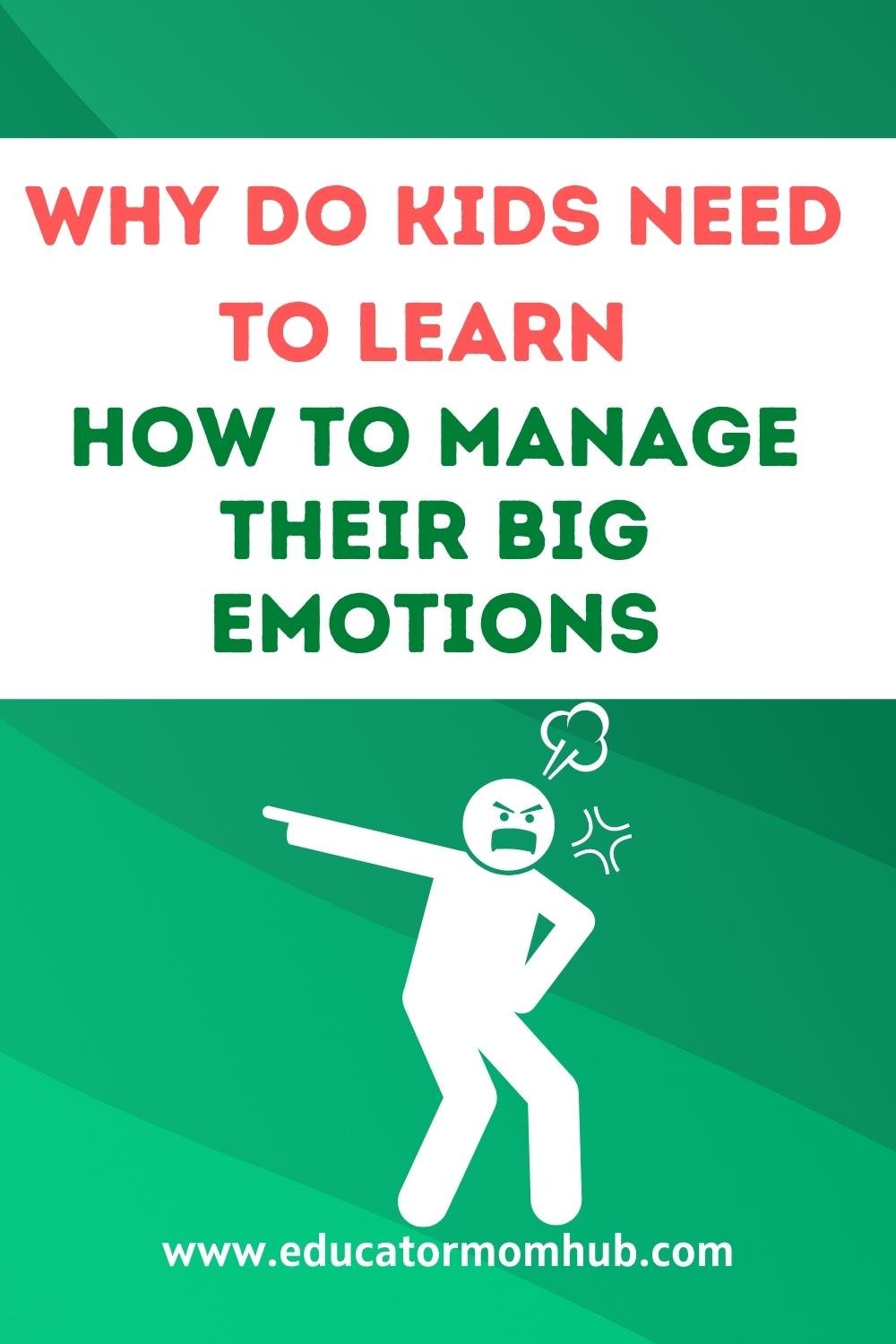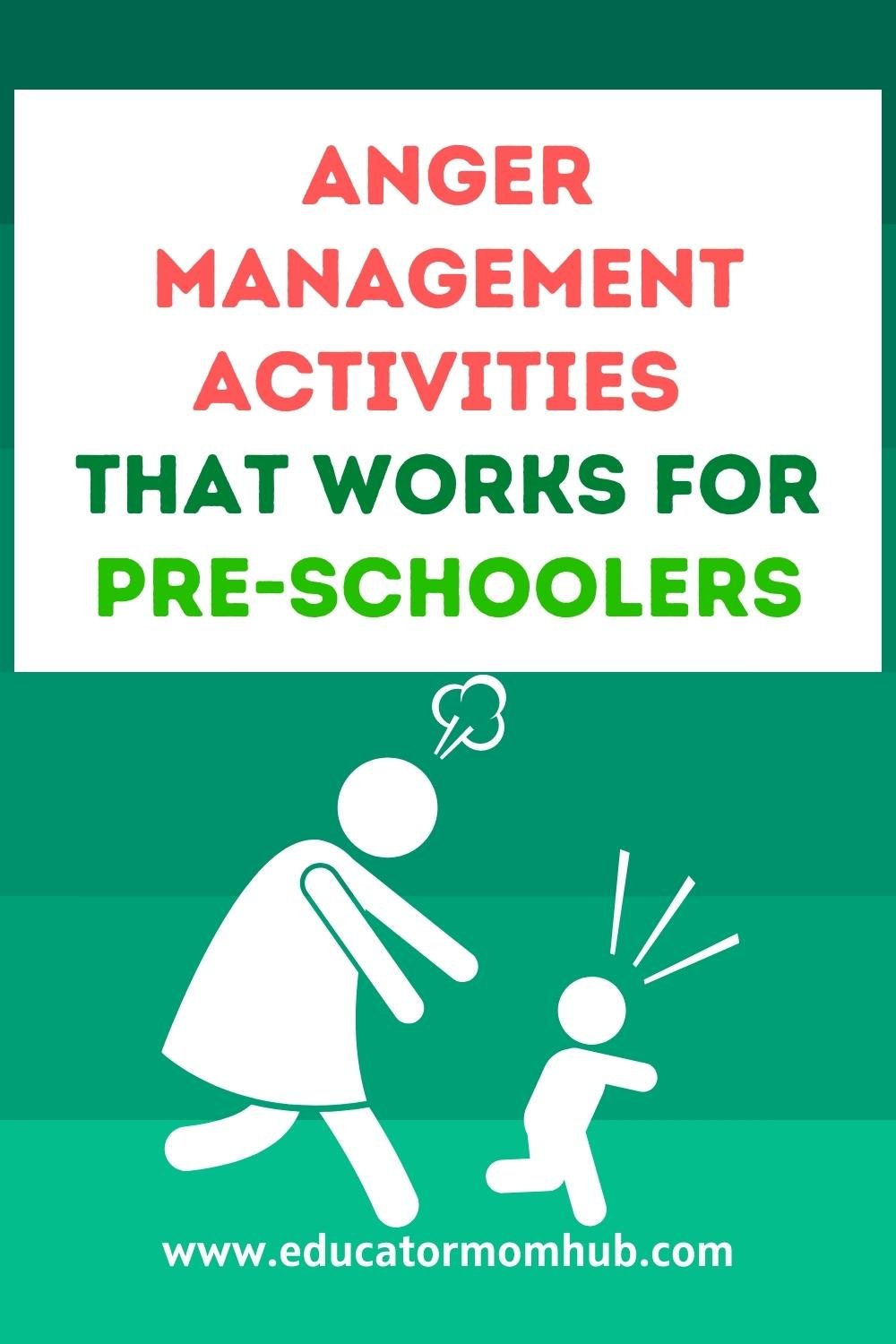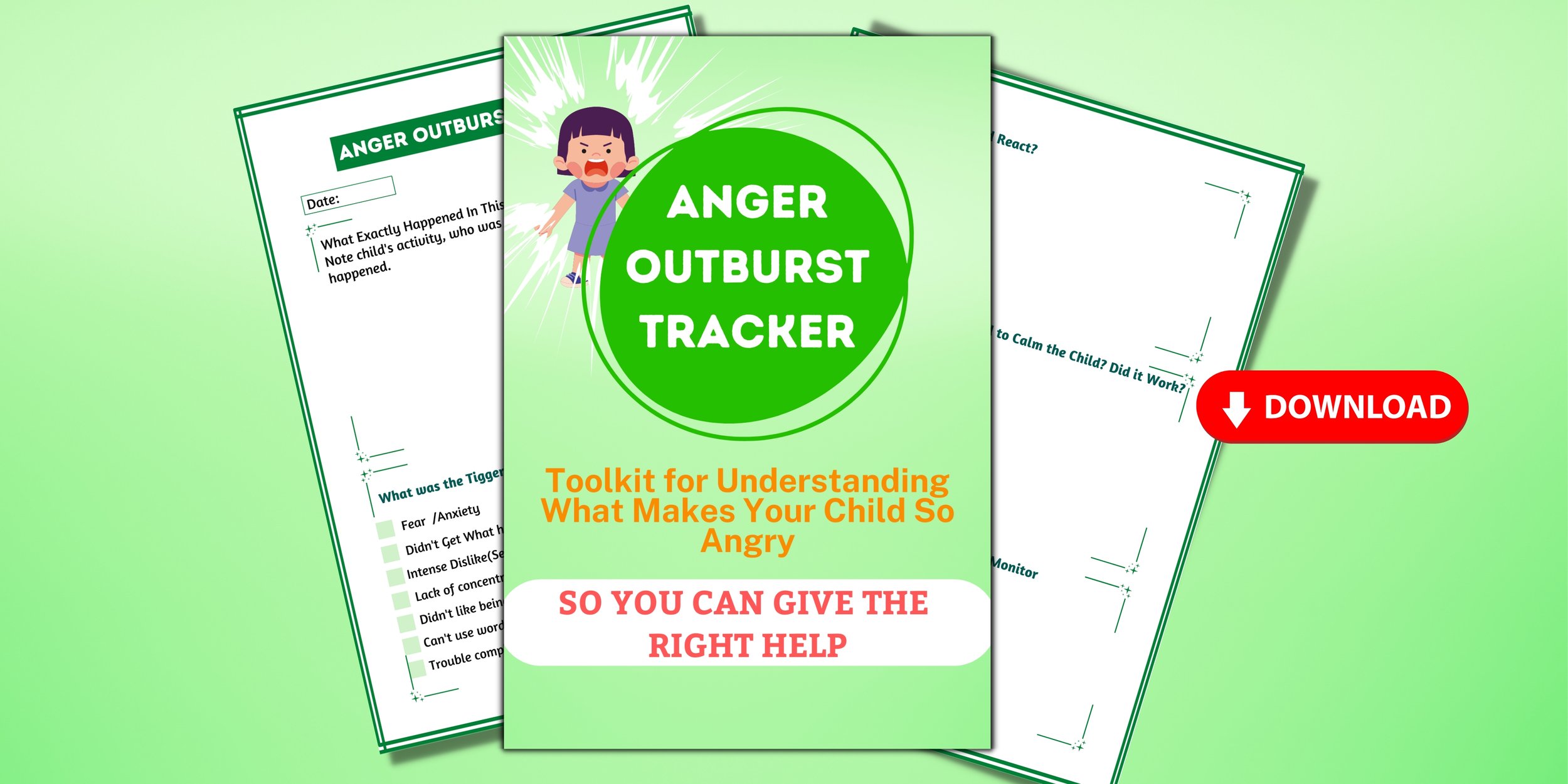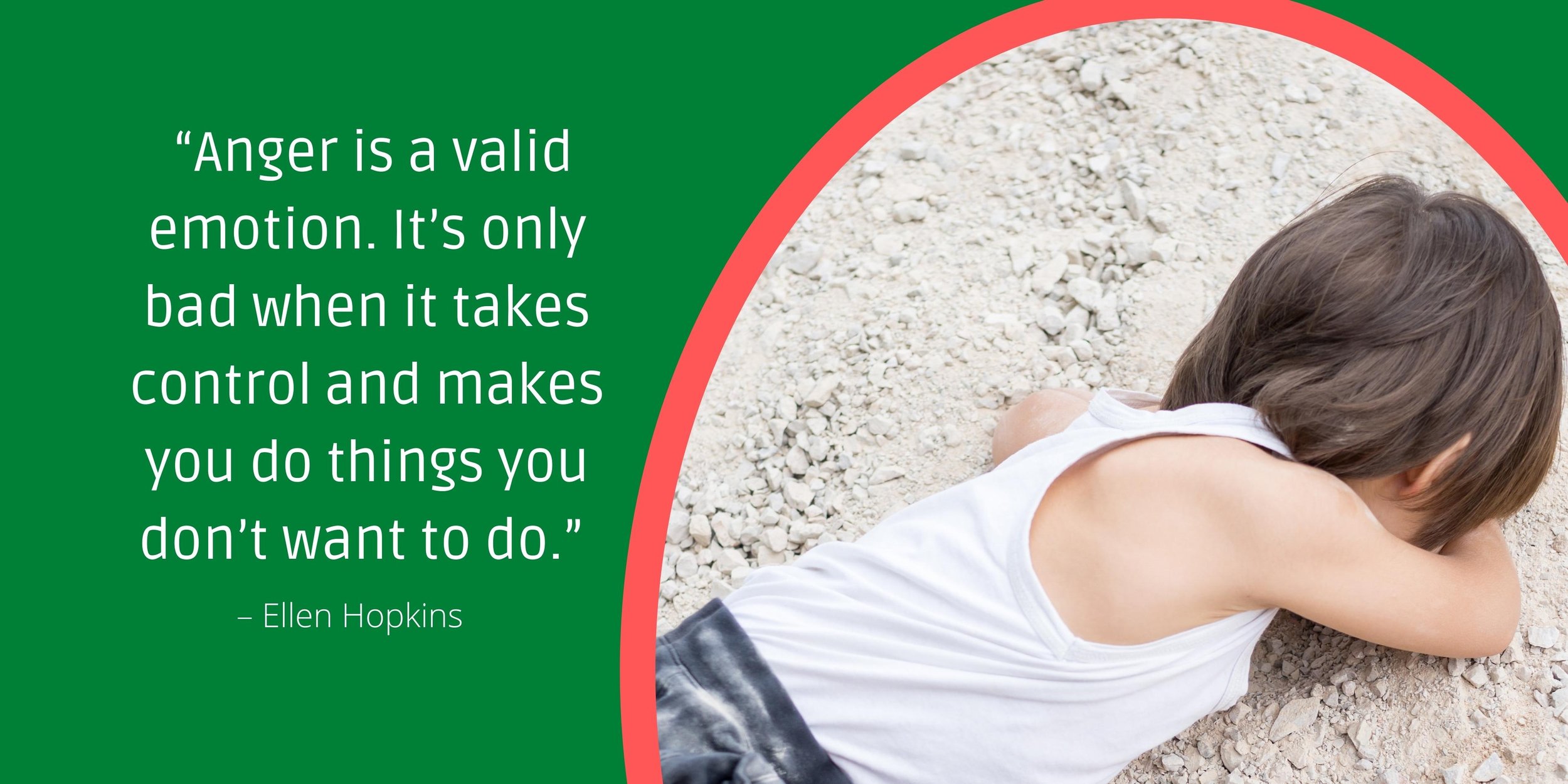21 Simple Anger Management Activities For Kids That Actually Work.
It's normal for kids to feel angry - after all, they're just learning how to cope with all the new emotions that come with growing up.
But when anger starts to affect their everyday life, it's time to do something about it.
If your child is struggling with anger management, don't worry - these 21 simple anger management activities will help them calm down and teach them healthy coping skills.
Why Do Children Get Angry- Understanding the Underlying Issues
Pin this Post to Pinterest
There are many different reasons why kids may struggle with anger, and parents need to understand the Underlying Issues of anger in kids so they can better help their children.
Some common underlying issues for anger in kids include:
Feeling Overwhelmed or Frustrated
A child may feel angry if they're struggling to keep up with their schoolwork and fear they'll never be able to catch up.
Feeling Anxious or Stressed
When a child is constantly dealing with overwhelming emotions like worrying about a family member's health or whether their parents will get divorced may lead to angry outbursts.
Feeling Powerless or Helpless
Being bullied at school and not knowing how to make it stop could trigger anger and change the child's behaviours towards people around them.
Feeling Invalidated or Unheard
A child might be furious because their parents are constantly telling them what to do and never giving them a chance to express themselves.
Feeling Like They're Not Good Enough
A kid may feel enraged because they are constantly compared to their sibling or feel like they never can satisfy their parents.
Feeling Unfairly Treated
A kid may be furious because they were in trouble for something their sibling did or they believe they are always the one being blamed.
Witnessing Violence
A child may find it difficult to cope with emotions if they see their parents fighting frequently or witness violence and injustice in their community.
Trauma
A child may feel angry because they experienced a traumatic event, such as abuse, neglect, or the death of a loved one.
Anger Signs that Children Need to Know
Parents can help their children understand anger by teaching them about the physical and emotional symptoms of anger.
Physical symptoms of anger may include
increased heart rate,
sweating, and
clenched fists.
Emotional symptoms of anger may include
feeling frustrated,
overwhelmed, or
out of control.
It's important to provide support and understanding to children when they are feeling angry. Parents should help children identify and label their feelings.
It's also important for parents to teach children that it's okay to feel angry, but it's not okay to act out in anger.
Why Do Kids Need to Learn How to Manage Their Big Emotions
Pin this Post to Pinterest
Anger is a normal emotion, but kids need to learn how to manage their angry feelings in healthy ways.
If kids don't learn how to cope with their anger, it can lead to problems at home, at school, and in relationships.
For example, kids who struggle with anger management may have trouble making and keeping friends, may get into fights at school, or may say and do things they later regret.
How Can Parents Help Their Children Build Anger Management Skills?
1. Have your child identify their physical and emotional signs of anger (as described above). This will help them to be more aware of when they are feeling angry.
2. Help your child label their feelings. This will help them understand and communicate what they are feeling. For example, they may say, "I feel frustrated because I can't figure out this math problem."
3. Talk about different ways to express anger as a coping skill. For example, your child might say, "I feel better when I go for a run" or "I like to talk to my friend about what's making me angry."
4. Help your child practice using their new anger management strategies. For example, role-playing different scenarios or practicing deep breathing exercises.
5. Praise your child when they use their anger management skills. This will help them feel good about themselves and encourage them to continue using these coping strategies.
Here are 21 anger management activities to help kids learn what an angry emotion is, what situations could make them angry and how to cope with their angry emotions.
Anger Management Activities for Kids
Pin this Post to Pinterest
1. Use Positive Self-Talk:
Help your child come up with some positive phrases they can say to themselves when they're feeling angry. For example, they might say, "I can handle this" or "I'm feeling frustrated, but I'll calm down soon."
2. Take Some Deep Breaths:
When children are angry, deep breathing exercises can assist them relax and calm down. Encourage your kid to take slow, deep breaths and practice this whenever they begin to feel enraged.
Breathing Techniques
4-7-8 breathing: Make a whoosh sound as you exhale completely through your mouth. Close your lips and breathe softly through your nose to the count of four. Hold your breath for a count of seven seconds. Exhale completely through your mouth, making a whooshing noise to the count of eight.
Belly Breathing: Take a deep breath in through your nose and relax your shoulders. Allow your stomach to expand as you take a deep breath in through your nose, then exhale slowly. Repeat this ten times.
Progressive Muscle Relaxation: To begin, tense all of the muscles in your feet for five seconds before relaxing them completely. Continue to work your way up the body, tensing and relaxing each muscle group for five seconds at a time as you go. As you do this, breathe deeply.
3. Use Visualization:
Encourage your child to close their eyes and imagine a calm, relaxing place. This helps kids feel more relaxed and in control of their emotions when they're feeling angry.
4. Get Some Exercise:
When children are angry, their heart rate and breathing quicken, and muscles tense up.
Exercise helps to release this built-up energy and tension, allowing children to feel more relaxed and in control.
Exercise also helps children positively channel their energy and can improve their mood.
Examples of Physical Activities That Can Help Kids Calm down.
Running
Jumping on a trampoline
Playing catch
Riding a bike
Throwing a ball against the wall
Hitting a punching bag
Doing jumping jacks
Here is an article with 9 Tips-Teach Your 4-Year-Old How To Manage Anger Naturally
5. Write it Down:
Pin this Post to Pinterest
Young children don't know how to write yet but they can still benefit from this activity by drawing pictures. This way the kids can express their anger without lashing out physically or verbally.
Older children and teens can write or type out their anger. This helps them to express what they're feeling in a constructive way and can also help them to identify patterns in their anger or their anger triggers.
6. Punch a Pillow
This is a good outlet for kids who need to physically express their anger. It allows them to release their anger in a safe and controlled way.
7. Play Some Music:
Listening to music or playing an instrument can help kids relax and calm down when they're feeling angry. It's also a great outlet for kids who need to express their emotions in a creative way.
Music therapy is a very helpful tool for emotional regulation.
8. Use a Stress Ball:
Squeezing and releasing a stress ball can help kids release their pent-up anger and frustration. It's also a helpful way to redirect fidgety energy.
9. Mindfulness
Mindfulness is a great way for kids to focus on the present moment and to develop greater self-awareness.
There are many different mindfulness activities that children can do, such as:
Sitting in silence and focusing on your breath helps to clear your mind and focus on the present moment.
Focusing on a certain object or your surroundings and really observing everything about it helps to ground you in the present moment.
Taking a mindful walk and paying attention to all the sights, sounds, and smells around you helps to centre you and focus on the here and now.
Drawing or colouring helps to calm the mind and focus on the present moment.
Doing a puzzle helps to focus on the problem-solving task at hand and clears your mind of other thoughts.
Playing with putty or playdough helps to release tension and focus on the present moment.
Yoga and meditation are also great ways to focus on the present moment and to promote relaxation.
Eating mindfully, where you pay attention to the taste, texture, and smell of your food is another great way to focus on the present moment.
Here is a helpful article for further reading-How to Teach Mindfulness to Kids: 26 Fun and Easy Ways to Get Started!
10. Role Play
Role-playing is an excellent way of teaching kids to explore various scenarios that could push their anger triggers.
Using the role play, kids can learn to identify anger-provoking situations as well as brainstorm ways how not to let those big feelings get out of control!
Fun Anger Management Games for Pre-Schoolers
There are actually quite a few games out there for pre-schoolers that can help with behaviour management and self-regulation.
If you are a preschool/ kindergarten teacher or a mom of young kids feel free to add these fun activities to your anger management resources folder.
Some of these games include:
11. The Feelings Matching Game.
This game is great for helping kids to identify different feelings, including anger.
To play, you will need a deck of Emotions and Feelings cards (which can be easily made by cutting out different feelings from construction paper) or you can get it here!.
Shuffle the cards and lay them out face down.
Players will take turns flipping over two cards.
If the two cards match, they can keep the pair.
If they don't match, they will flip the cards back over and it will be the next player's turn. The goal of the game is to get as many pairs of matching feelings as possible.
This game is great for helping the child explore different feelings and to start understanding how those feelings can be expressed.
Here is a helpful article Positive Parenting for Teaching Emotion Recognition to Totally Change Your Child’s Behaviour
12.The Anger Iceberg Game.
Each player starts with a sheet of paper and draws an iceberg.
On the iceberg, they will draw different things that make them angry.
Once the icebergs are complete, players will share their icebergs with the group and talk about ways to deal with their angry feelings.
This game is great for helping kids identify their anger triggers and to start thinking about constructive ways to deal with those triggers.
13.The Feelings Thermometer Game.
This game is played with a feelings thermometer (which can be easily made by drawing a thermometer on a piece of paper).
The object of the game is to see how high up the thermometer your anger can make it go!
To play, each player will take turns saying or doing something that made them angry.
For each angry situation, the player will colour in a section of their thermometer.
The goal is to see how high up the thermometer your anger can make it go!
This game is great for helping kids to understand how their unmanaged anger affects their bodies and to start thinking about ways to keep their anger in check.
14. The Monster in the Mirror Game.
For this game, you will need a mirror and some emotions and Feelings cards.
Show your child the mirror and explain that there is a monster inside of it who is feeling a certain emotion- choose/ show an emotion card to the child.
Help your child identify the emotion that the monster is feeling. Once your child has identified the emotion, have them act out how the monster might act if they were feeling that emotion, using the actions, voice, and facial expressions.
This game is great for helping kids understand and express different emotions in a healthy way.
15.The Anger Monster Game.
Pin this Post to Pinterest
This game is perfect for younger kids who need help learning how to control their anger.
To play, each player will need a sheet of paper and some crayons. On the sheet of paper, they will draw a picture of an anger monster.
Once the monsters are complete, players will take turns sharing things that make their anger monster grow bigger.
After each turn, the player will draw their anger monster getting bigger. When it's time to calm down, they will talk about things that make them happy or calm and draw their anger monster getting smaller.
This game is great for helping children learn how their anger can grow and how they can feel calm again.
16.The Balloon Breath
This fun anger management game is perfect for helping kids to calm down when they are feeling angry.
To do this exercise, have the child stand with their feet shoulder-width apart and their hands around their mouth as if blowing into a balloon.
Have them take a deep breath in through their nose and then exhale slowly through their mouth, making sure to keep their lips pursed as if they were blowing up a balloon.
Repeat this exercise for 10 breaths.
This exercise is great for helping kids to calm down and to focus on their breathing.
17.The Squeeze and Release
This exercise is great for helping kids to release tension from their bodies.
To do this exercise, have the child stand with their feet shoulder-width apart and their hands at their sides.
Have them take a deep breath in and then squeeze their whole body tight, making sure to hold their breath for a count of three.
After the count of three, have them release their body and exhale slowly through their mouth.
Repeat this exercise for 10 breaths.
This exercise is great for helping angry children release tension from their bodies and to focus on their breathing.
18.The Anger Button Game
Pin this Post to Pinterest
This is a great game for helping kids to understand how to control their anger.
To play, each player will need a sheet of paper and a pencil.
On the sheet of paper, they will draw a big button in the middle. Around the button, they will draw things that make them angry.
Once the picture is complete, players will take turns pressing each other's buttons.
When it's their turn, the player will choose one thing from the other player's button and talk about how it makes them feel and what do they do about it. (The goal of the game is to help kids understand that other people feel anger too and sometimes because of the same reasons that they do.)
During this exercise, kids learn about anger warning signs and to start thinking about coping strategies.
19.The Calm Down Bottle Game
This game is perfect for helping kids to learn how to calm down when they are feeling angry. To play, you will need a clear bottle and some water.
Fill the bottle about halfway with water and then add a few drops of food coloring.
To play, have the child hold the bottle in their hand and then watch as the water inside starts to swirl and change color.
As they watch the water, have them take deep breaths and focus on self-regulation.
This game is great for helping soothe a child's anger.
20. The Gratitude Game
This game is perfect for helping kids to understand the power of gratitude. To play, you will need a sheet of paper and a pencil.
On the sheet of paper, draw a line down the middle to create two columns.
Label one column "Things I'm Angry About" and the other column "Things I'm Grateful For."
Have the child start by brainstorming a list of things that make them angry. Once they have a good list, have them start thinking about things that they are grateful for.
It can be something as simple as "I'm grateful for my bed" or "I'm grateful for my parents."
The goal of the game is to help kids focus on the positive things in their life, even when they are feeling angry.
Here is an article on How to Teach Kids Gratitude in 9 Easy Steps
21.The Relaxation Game
This game is perfect for helping kids to learn how to relax their bodies. To play, you will need a sheet of paper and a pencil.
On the sheet of paper, draw a picture of a person in the middle.
Around the person, draw different things that can help them relax.
Once the picture is complete, have the child take a deep breath and then use their finger to trace around the things that can help them relax.
As they trace around the objects, have them focus on calming down.
The goal of the game is to help the angry child understand how to relax their body and manage anger.
When Should You Seek Professional Help?
If your child's anger is out of control, causing them to hurt themselves or others, or if you are concerned about their wellbeing, it is important to seek professional help.
A therapist can help your child to understand their anger and to develop healthy coping skills. You can find a qualified professional by simply googling for one in your area.
These are just a few ideas to get you started. If you are looking for more information on anger management, please check out my other articles:
Conclusion
Anger is a normal emotion that all kids experience. However, some kids have a hard time with anger management.
If your child is struggling with anger, there are many anger management techniques to help them.
The key is to find an activity that works for your child and to be patient as they learn how to cope with their anger.
Use these games to help your child understand and manage their anger healthily.
By teaching your child how to deal with their anger now, you can set them up for success in the future.
Thanks for reading!
FAQ
How do I know if my child needs help with anger management?
If your child is struggling to cope with their anger, it may be time to seek professional help. Some signs that your child may need help include: Acting out aggressively toward others, Destruction of property, Withdrawing from friends and activities, Refusing to communicate, and Frequent outbursts. If you are concerned about your child's anger, talk to their doctor or mental health professional.
What are some common causes of childhood anger?
Many factors can contribute to childhood anger. Some common causes include Frustration with abilities, feeling powerless, Lack of control, feeling misunderstood, perceiving slights or injustice, witnessing violence, and having unmet needs or expectations.


